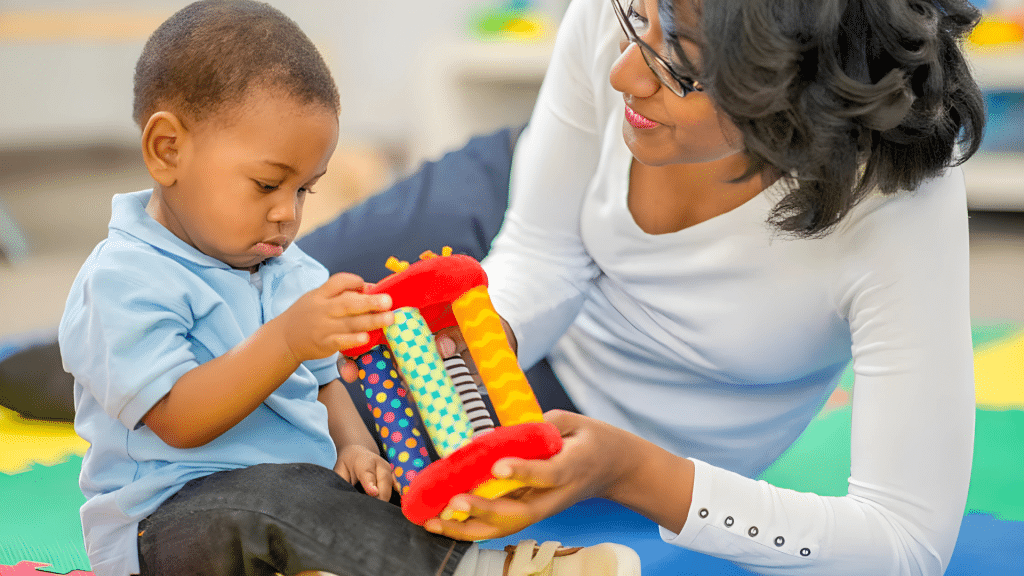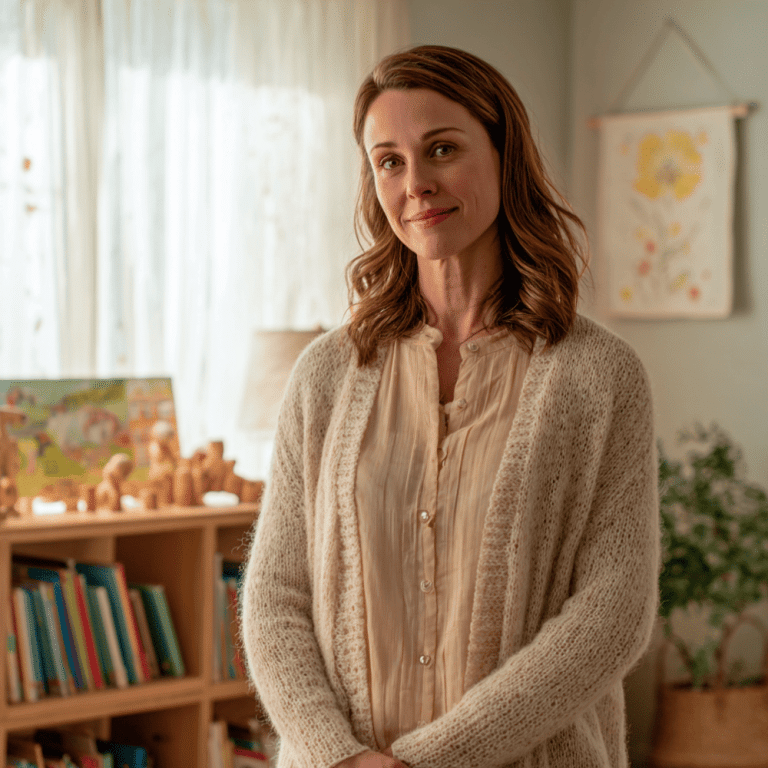I’ve seen how toddlers grow best through play, not just by watching. Sensory play for toddlers provides opportunities for them to engage their senses through touch, sight, sound, taste, and movement to try and experience.
The best part is how simple it can be. You don’t need special toys or big setups. Everyday items from the kitchen or playroom are more than enough.
In this blog, I’ll share activities that have worked for me and can work for you, too. When you set up toddler sensory activities, you wanna stick to quick, easy, and low-mess ideas. They keep little hands busy and also support learning and growth.
What is Sensory Play For Toddlers?
Sensory play for toddlers is any activity that engages one or more senses. It might be squeezing dough, shaking a noisy jar, or walking barefoot across soft rugs.
These activities give toddlers direct ways to process the world. They learn how different things feel, sound, and move through simple, hands-on experiences.
Sensory play does not require expensive toys or kits. Everyday items, such as rice, pasta, soap bubbles, or pots and pans, can be transformed into powerful learning tools.
Even the simplest setups can hold a toddler’s attention. A small bin of pasta or a jar filled with beans can spark curiosity, encourage focus, and make playtime meaningful.
Benefits of Sensory Play
Sensory play is more than fun. It supports your toddler’s brain development, builds motor skills, and improves focus.
- Fine motor skills, such as scooping, pouring, and squishing, strengthen hands and prepare toddlers for tasks like writing.
- Language growth: New sounds and scents encourage toddlers to describe what they notice and add new words.
- Focus: Playing with textures or tasks helps toddlers practice attention and follow-through.
- Emotional control: Simple setups, such as water play or rice bins, calm toddlers and provide safe outlets for their energy.
- Overall growth: These experiences foster confidence, independence, and skills that lay a strong foundation for learning.
Types of Toddler Sensory Activities
Sensory activities can be grouped by the sense they target. Each one gives toddlers a unique way to learn, and together they support healthy growth.
1. Hands-On Touch Play Ideas
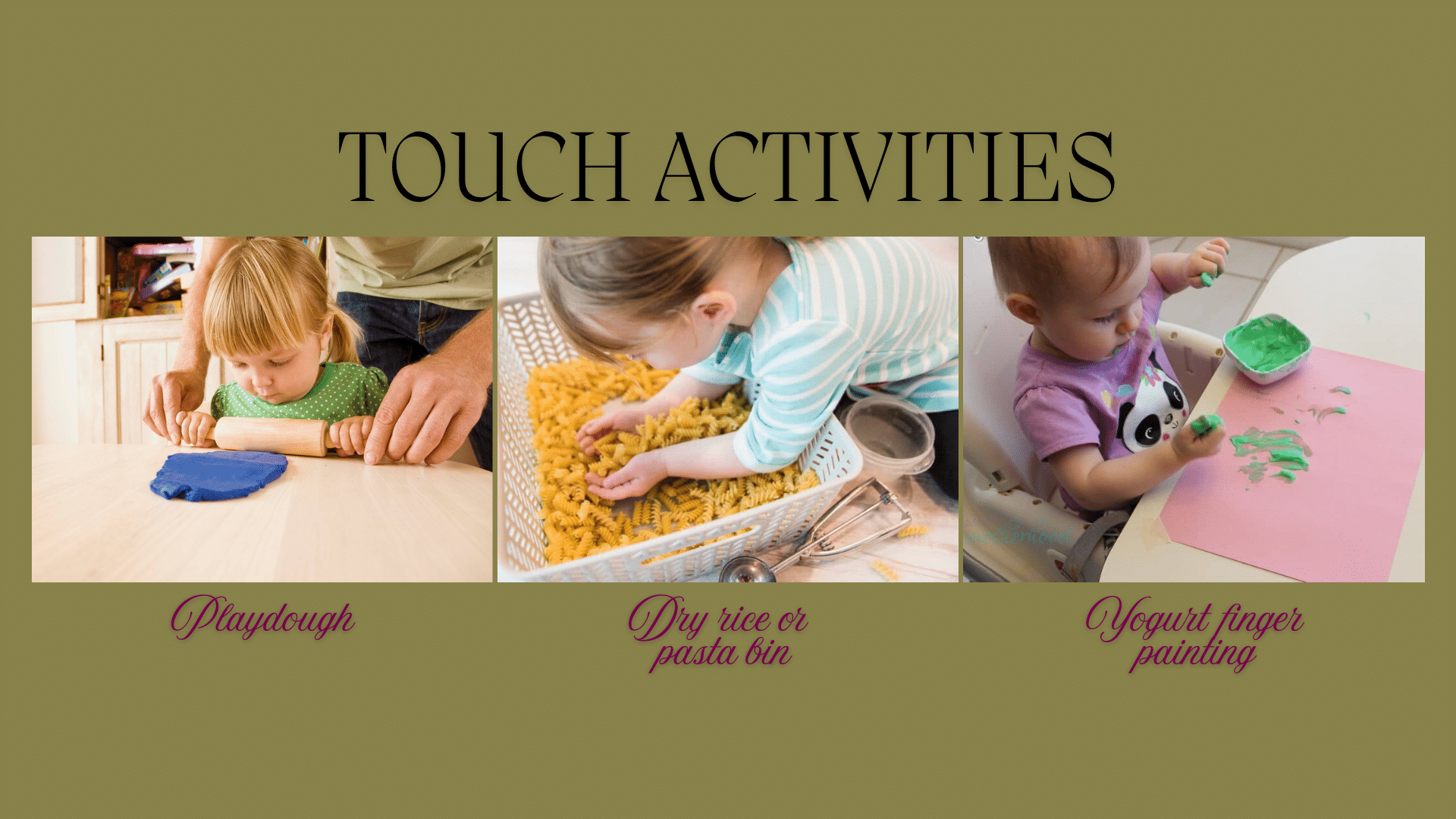
Toddlers learn a great deal through touch, as it is often their primary means of exploration. Feeling different textures helps them compare soft, rough, smooth, or squishy surfaces.
- Playdough: Store-bought or homemade dough is perfect for rolling, squeezing, and pressing with small tools. It strengthens little hands and builds fine motor control.
- Dry rice or pasta bin: A container filled with rice or pasta becomes an instant play station. Add scoops, spoons, or cups for pouring, dumping, and filling.
- Yogurt finger painting: For a taste-safe option, spread yogurt on a tray and let toddlers swirl and smear with their fingers. This mixes touch with a bit of taste exploration.
2. Color and Light Sensory Games
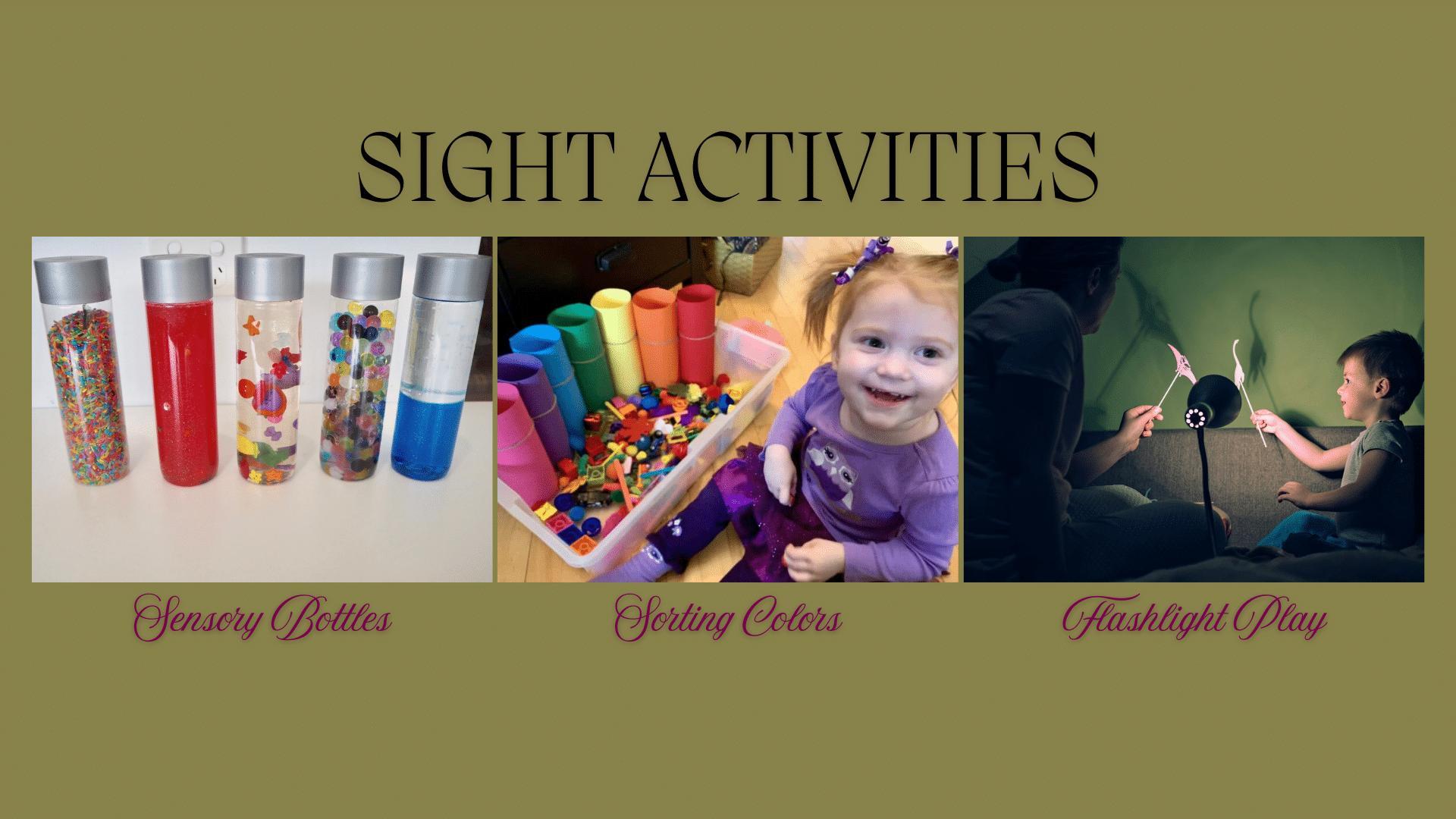
Activities that use color and light help toddlers notice patterns, shapes, and differences. Visual play supports early learning skills, such as sorting, matching, and maintaining focus.
- Sensory bottles: Fill bottles with water, oil, and glitter to create slow-moving effects. Toddlers can watch the colors shift as they shake and turn the bottles.
- Sorting colors: Pom-poms, spoons, or building blocks can be sorted by color. This teaches organization and builds an early understanding of grouping.
- Flashlight play: In a darkened room, shine a flashlight on walls, ceilings, or toys. Toddlers love to chase the light or watch how shadows move.
3. Fun Sound and Rhythm Activities
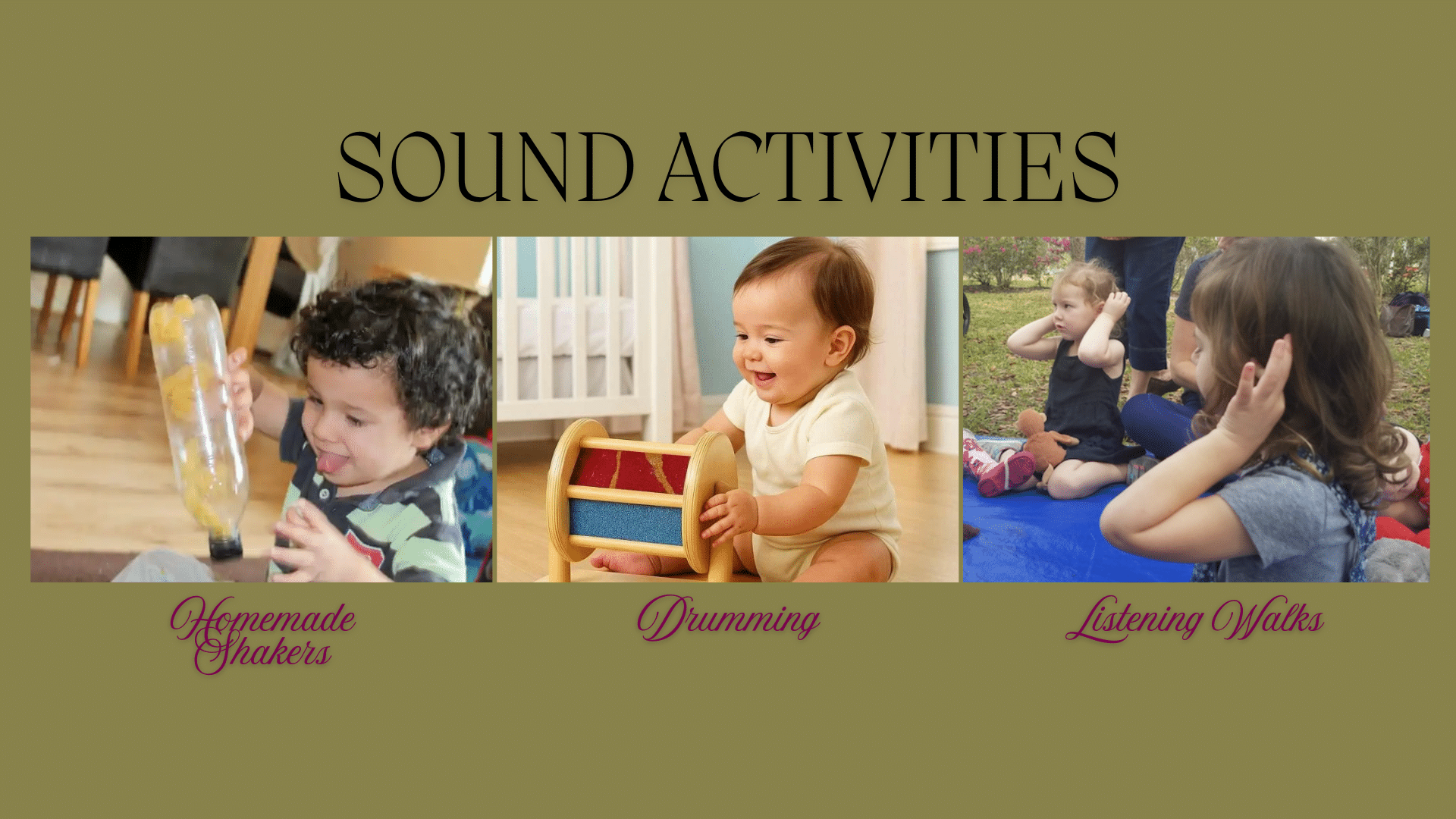
Sound play teaches toddlers about rhythm, tone, and volume. It can also help them practice listening and improve focus.
- Homemade shakers: Fill jars with pasta, beans, or rice and seal them tightly. Toddlers can shake them to create different noises.
- Drumming: Pots, pans, and wooden spoons can be used to create an instant drum set. This helps toddlers learn about patterns while burning off extra energy.
- Listening Walks: Step outside and focus on noticing the sounds around you. Point out birds singing, dogs barking, or cars driving by to build awareness.
4. Safe Taste-Based Play Ideas
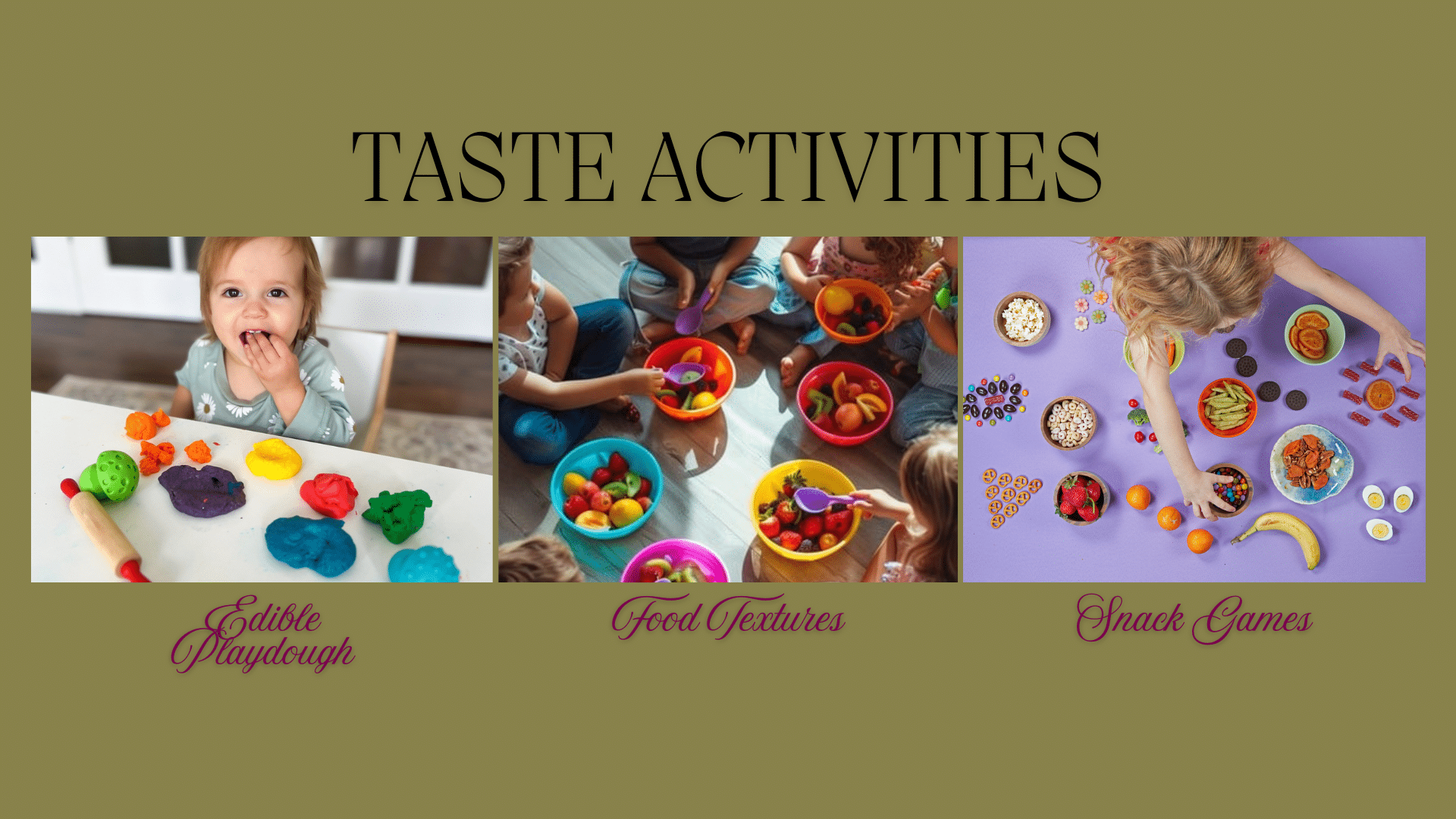
Taste activities are especially fun for younger toddlers who often learn about the world by putting things in their mouths. Keeping it safe and edible is key.
- Edible playdough: A simple mix of flour and yogurt creates dough that is safe to taste. Toddlers can squish and roll it without worry.
- Food textures: Offer small portions of food, such as bananas, crackers, or cooked pasta. Encourage toddlers to squish, smear, or break them apart.
- Snack games: Offer safe snacks with different textures, such as crunchy crackers or soft fruit. Ask your toddler to describe the difference.
5. Simple Smell Activities for Toddlers
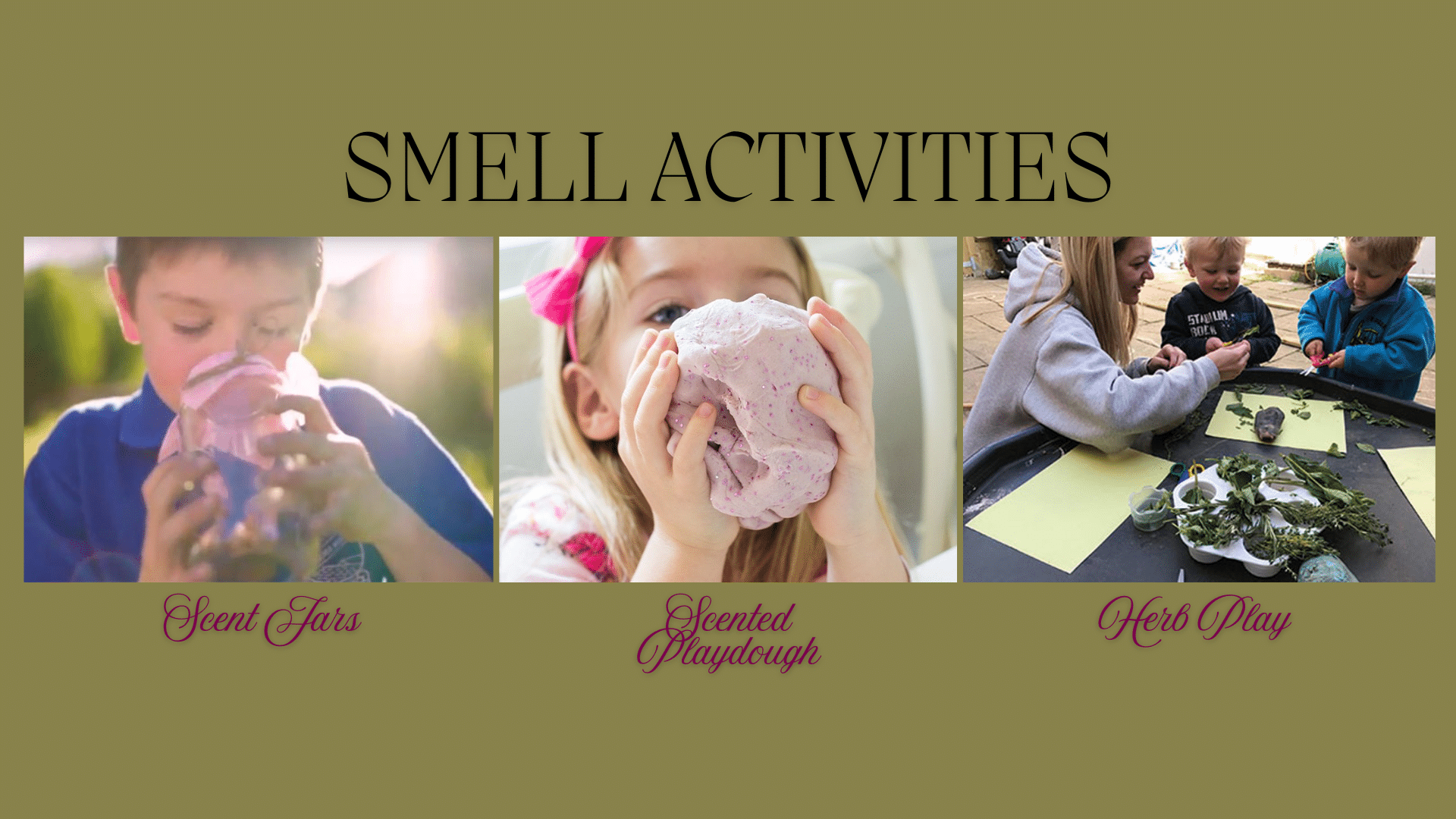
Smell is often overlooked, but it is closely tied to memory and recognition. Exposing toddlers to safe scents helps build awareness in a fun and engaging way.
- Scent jars: Fill small jars with safe items, such as cinnamon sticks, vanilla beans, or lemon peel. Toddlers can take gentle sniffs and compare the smells.
- Scented playdough: Add a few drops of safe scents to homemade playdough. Toddlers can squish and smell at the same time.
- Herb play: Offer fresh herbs such as mint, basil, or rosemary from the kitchen. Let toddlers rub the leaves between their fingers to release the smell.
6. Movement and Balance Play at Home
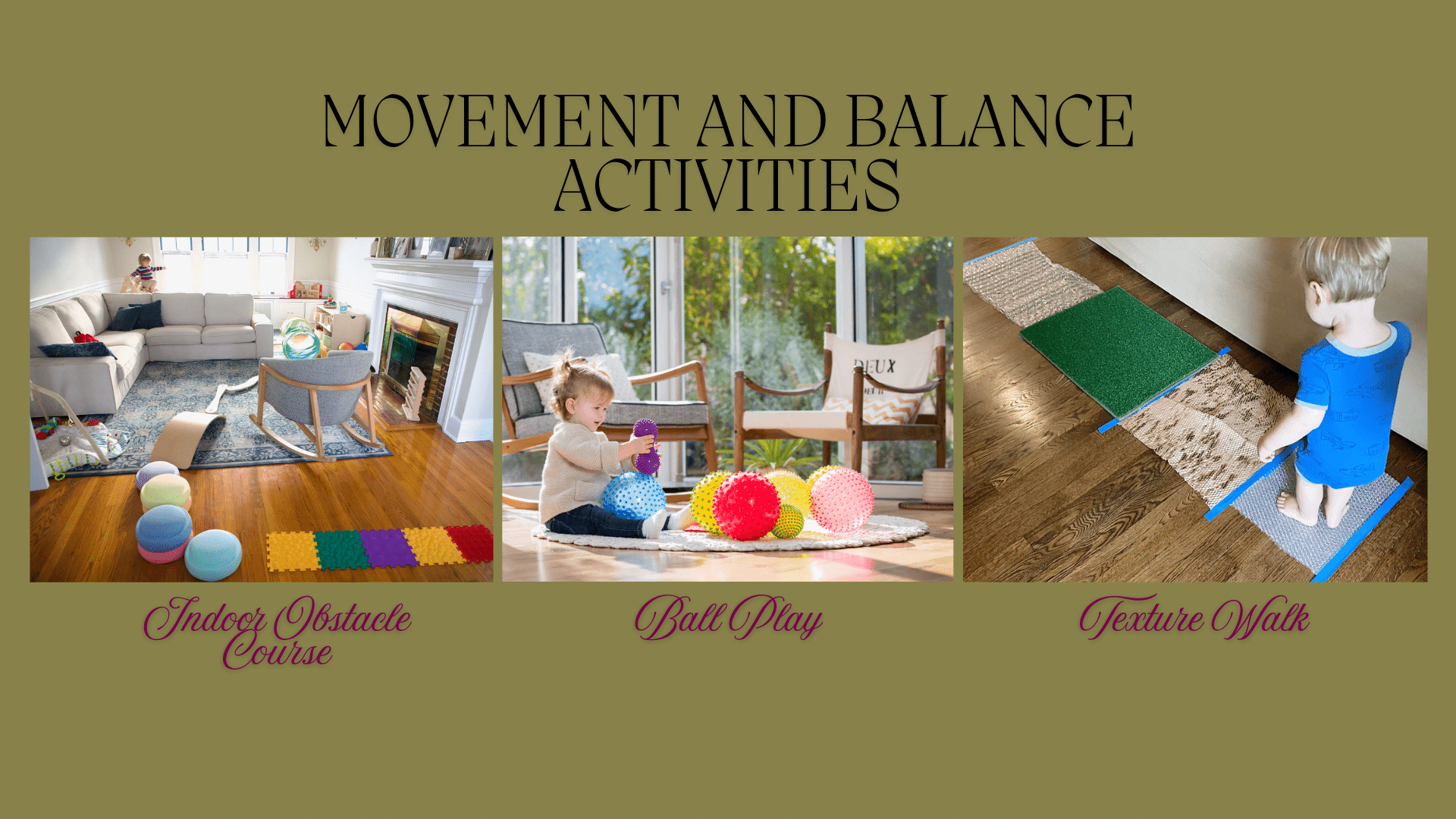
Movement activities use large muscles and help toddlers build balance, strength, and coordination. These activities also provide an outlet for extra energy.
- Indoor obstacle course: Use pillows, blankets, or cushions to create paths for climbing, crawling, and jumping. This helps build core strength and balance.
- Ball play: Soft balls can be rolled, kicked, or tossed indoors. These simple games support hand-eye coordination and gross motor development.
- Texture walk: Create a safe path of rugs, mats, or grass for toddlers to walk on barefoot. They will notice the difference between smooth, rough, and soft textures.
Special Needs & Adaptations
Sensory play can be very supportive for children with developmental differences. With small changes, it becomes safe, calming, and enjoyable for every child.
One way to adapt is by using larger items to reduce the risk of choking. Taste-safe materials work best for younger children, and keeping activities less messy helps when cleanup is stressful.
Some children may feel overwhelmed by loud noises, strong odors, or excessive textures. In these cases, start small and slowly add new elements at a comfortable pace.
Helpful tools include noise-canceling headphones, weighted lap pads, or visual schedules. A quiet corner with soft toys or a blanket also gives children a safe space for breaks.
These adjustments make sensory play more accessible while supporting comfort and safety.
Tips for Safe and Fun Sensory Play
Keeping sensory play safe and manageable makes the experience better for both you and your toddler. A few simple steps can help reduce mess and risk.
- Keep activities small and contained. Using a tray, tub, or shallow bin keeps materials in one place, making cleanup faster. It also helps toddlers focus on the play area.
- Supervision is always important. Toddlers often test things with their mouths, so choose taste-safe options whenever possible. Foods, edible doughs, or large household items work well.
- Start with short sessions of 10-15 minutes. This helps toddlers adjust to new experiences without becoming overwhelmed. As they enjoy it more, slowly increase the play time.
- Always check for choking hazards. Avoid items that are small, hard, or easily swallowed. If your child still mouths objects, stick to larger items, such as big blocks, chunky spoons, or soft balls.
- Think about safety and comfort together. Ensure the play space is stable, wipe up spills promptly, and keep sharp or breakable items out of reach.
With these steps, sensory play stays safe, fun, and stress-free.
How to Make Sensory Play a Routine
Sensory play is most effective when it becomes a natural part of daily life. Small, consistent setups give toddlers the benefits without adding stress for parents.
A simple approach is to keep a bin ready with rice, pasta, or safe toys. Rotating items each day keeps the play fresh, and short sessions of 10-15 minutes help toddlers stay focused without feeling overwhelmed.
Sensory play can also fit into everyday moments. During bath time, add cups, sponges, or containers for water play. At mealtime, encourage safe food play with textures like pasta or fruit. For the outdoors, let toddlers notice sand, grass, or buckets of water for natural sensory experiences.
These small adjustments make sensory play an integral part of a regular routine, while keeping it easy and enjoyable.
Conclusion
Sensory play for toddlers doesn’t need to be messy or take hours of setup. With simple ideas like bins, bottles, or playdough, I can turn everyday items into safe learning opportunities.
These toddler sensory activities do more than entertain. They help with brain growth, motor skills, and language while keeping play enjoyable and stress-free.
I like to start small and see which activities my child enjoys most. Every child is different, so a mix of options keeps things fresh and exciting.
If you’re ready to try, pick one idea today and set it up at home. Sensory play can be a simple way for you to connect, learn, and have fun together with your child.


